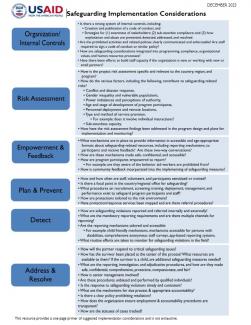Safeguarding Implementation Considerations
Organization/Internal Controls |
|
|---|---|
Risk Assessment |
|
Empowerment & Feedback |
|
Plan & Prevent |
|
Detect |
|
Address & Resolve |
|
This resource provides a one-page primer of suggested implementation ideas and is not exhaustive. Please consult with additional toolkit resources provided here.

